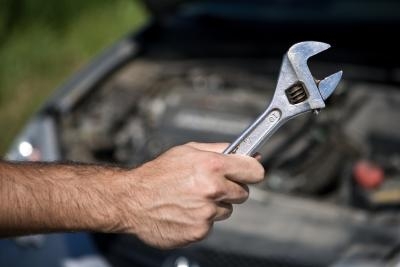
The carburetor provides fuel vapor to the cylinders allowing the vehicle to run. When your car runs rough or sluggish it can be due to the carburetor being dirty or worn. Rebuilding the carburetor can return your vehicle to optimal running condition. Purchase a carburetor kit which comes with items such as a diagram, gaskets and float valve device. The key to rebuilding a carburetor is taking your time, studying the diagram and laying all the parts in sequence.
Purchase a carburetor kit from a local dealer or auto parts store. Make sure the kit matches the model number found on your carburetor. The model number can be found on the outside of the carburetor either on a metal plate or engraved into the housing. It is important that the number is correct. It cannot be returned once the kit is opened.
Clear a workspace that is at least three square feet and has good lighting. You want enough room to be able to lay out all the parts in order. Put a piece of craft paper down that is a different color than the parts for better visibility. Finally, the area needs to be well ventilated; the carburetor cleaner emits toxic fumes.
Disconnect the carburetor from your vehicle. Tag connections in vehicle with masking tape and a marker for easier re-assembly. Items you will disconnect are the accelerator pump and cover, linkages, hoses and screws, fuel line, mounting bolts
Remove parts from carburetor. Make sure to lay parts in order as you remove them for easier re-assembly. Mark anything necessary to help guide you through the process. Items that will be removed from the carburetor are the fuel inlet filter, idle step solenoid, choke pull off, housing and thermostat, air horn screws and gasket, power valve metering rods, needle and seed, and base plate screws.
Clean each part with carburetor cleaner. Wear a mask and gloves, fumes are toxic. Do not use cleaner on rubber, electrical or plastic parts. Gently use a toothbrush, so not to damage or scratch parts, and clean any remaining debris. Wipe off parts and blow dry with canned air or an air hose.
Re-assemble parts according to the diagram and the order you have laid them out. Make sure to physically match the old gasket with the new one before installing, there are different configurations included in kit. Set float valve to your specific vehicle with device included in kit. This is an important step to recheck for the optimal operation of your vehicle. Put the carburetor in vehicle and re-connect.